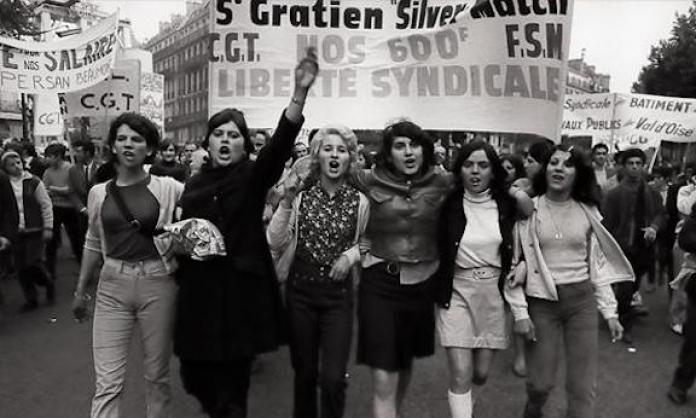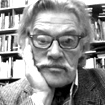The scene on which the sun rose in 1968 was one which, in the years since World War Two, had shown a remarkable recovery. Not a return to the 1930s, but a seemingly stable environment of rising living standards, a mixed economy, expanded opportunity, a welfare state and a liberal cultural climate. Above all, despite the Cold War and the contained threat of nuclear war, there was bourgeois self-confidence.
Establishment propagandists proclaimed the end of ideology, the end of class and revolution as the opiate of the intellectuals. The world of tomorrow was to be the recent past projected into the infinite future: consumerist, complacent, above all capitalist.
There were clouds on the horizon: civil rights and white racist backlash in the US, a rising unofficial strike movement in Britain, the intractable and, as it transpired that very year, unwinnable US war in Vietnam.
Local difficulties only, it was thought. By the end of the year, these illusions lay badly shattered. The next 10 years were years of serious class contestation: for badly rattled rulers, years of fear, for many millions of people around the world, years of hope.
If some of the revolutionary hopes aroused by 1968 have failed, or have failed so far, to come to fruition, how much more of a chimera was the fantasy world of the rulers and their apologists?
Neither side knew it, but 1968 marked the end of stasis and the beginning of a rolling crisis that still hasn’t ended.
On 30 January 1968, 300 student protesters from Poland’s National Theatre School and the University of Warsaw demonstrated for student rights and were clubbed by state-supported thugs. The beating initiated escalating protests, joined by the broader public including many workers, which shut down all of tertiary education.
In a process that will surprise few students of Polish politics, the Stalinist government of Wladyslaw Gomulka labelled the protesters “Zionists” (meaning in this context Jewish) and, under the supervision of interior minister Moczar, began an anti-Semitic propaganda campaign. By the end of the year, most remnants of the once imposing Jewish community of Poland had been forced out of the country. Among them was the heroic Red Orchestra leader Leopold Trepper, whose underground fight against Nazism had been rewarded with 10 years in a gulag.
Also on 30 January, the South Vietnamese National Liberation Front launched the Tet Offensive, which made it clear – to world public opinion, to the US antiwar movement and even to the more far-sighted among the US ruling class – that the “light at the end of the tunnel” was the burning of US initiative in the war and of LBJ’s presidency.
In West Germany in February, students from 108 universities rose up, demanding the removal of professors with Nazi pasts. For instance, at the University of Bonn they fought for the removal of the university president, a builder of concentration camps.
Also in February, three unarmed black students were murdered at a civil rights demonstration in Orangeburg, South Carolina. In March, students walked out of public schools in East Los Angeles, protesting against wide racial disparities in educational resources and conditions.
On 4 April, the US and the world were rocked by the assassination of Dr Martin Luther King in Memphis, and Black America exploded in ghetto uprisings of righteous rage. Three weeks later, students at Columbia University occupied buildings and took admin staff as hostages.
Then, beginning in May and extending through June, Paris and much of France erupted. Detonated by students at Paris/Nanterre, initially over dormitory and fraternisation issues, the unrest led to confrontations with the brutal CRS security forces, barricades and pitched battles, and then to the bourgeois nightmare of a political general strike as millions of French workers downed tools and occupied workplaces.
President Charles de Gaulle, a bourgeois figure of some substance, was far more rattled by the events than he had been by World War Two or the Algerian war of independence. Describing the uprising as a pre-revolutionary situation, he fled to Germany, seeking assurances of military support from French troops stationed there if a working class uprising occurred.
However, the Stalinist-controlled CGT union federation settled for wage rises and some concessions on union recognition, and the situation was defused. But it was years before the French ruling class attempted serious attacks. Even now, 50 years later, they have to take account of the possible reaction to austerity measures.
August: Prague spring past and a withering winter to come; the last credible attempt at internal reform of “communism” was crushed by Brezhnev’s tanks. It was another nail in the coffin for Stalinism, adding to the betrayal of the French general strike. Notably, the sharp left turn of large numbers of mainly young people in 1968 bypassed official communism and the social democratic parties.
Instead, “groupuscules”, small revolutionary socialist propaganda groups, often of venerable lineage, went from dozens to hundreds, from hundreds to thousands, initiating a rediscovery of revolutionary thought that made bourgeois publishers happy to reissue revolutionary Marxist writings long buried under the Stalinist rubble.
Mexico City, 16 October: in an unforgettable display of dignified defiance, Tommie Smith and John Carlos, with bowed heads and clenched fists, affirmed their African-American identity and solidarity with victims of racism around the world, following in the footsteps of Muhammad Ali in their refusal to be well-behaved Black sports stars.
The Mexico Olympics also brought frightful massacres of university students as police, paratroopers and paramilitaries fired on a student demonstration, killing at least 100 unarmed protesters. The toll probably was several times that number.
The year ended with the ruling class shocked and psychologically destabilised, and with the oppressed throughout the world heartened and ready for further struggle after 12 months of events with no recent precedent.
Over the top journalistic appreciations of the year described it as a new 1848, but it wasn’t. Within a few years, the ruling class internationally embarked on a concerted counter-attack, signalled by the Chilean coup of 1973, a process only now beginning to run out of steam.
Will there be two, three, many 1968s? Certainly. Lenin described the revolutionary process as “mysterious”, and if it was mysterious to him, it must be more mysterious to most of us. But time and again the planets move into alignment and things happen.
The events of 1968 breathed new life into the far left around the world and contributed to the rise of a new revolutionary generation; the year underlined the international nature of revolutionary struggle; it spanned continents and social systems; it spared neither the imperialist rulers nor Stalinist satraps nor neo-colonial puppets. And it put revolution firmly back on the agenda. Despite backlash, a massive bourgeois propaganda war and our own mistakes, it remains there.
To close on a personal note: as a very minor spear carrier in the revolutionary opera – who began the year with a sound hatred of Cecil Rhodes, Henry Ford and particularly racism, but little else in the way of political furnishings – the events, for me as for millions of others, were life-changing and life-enhancing.
Despite Wordsworth’s ultimate rejection of the French Revolution, I can happily affirm: “Joy was it in that dawn to be alive; and to be young was very heaven”.











